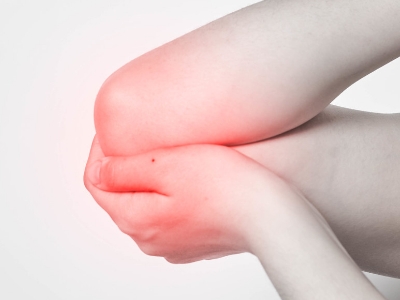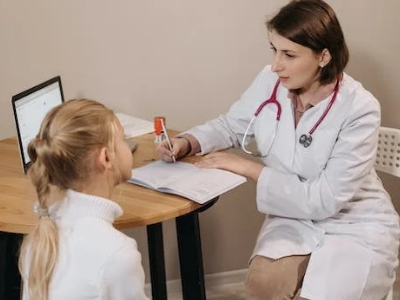Juvenile Arthritis: Symptoms, Types, Risk Factors, Causes, and Treatment

The most common type of Juvenile Arthritis that children suffer from is at the age of 16. Certain forms of this condition can lead to serious complications, including growth issues, joint injuries, and eye inflammation. Treatment is focused on reducing inflammation and pain, improving the eye’s function, and avoiding injuries.
What is Juvenile Arthritis?
Juvenile arthritis (JA), or pediatric rheumatic disease, is not a specific condition. It’s a broad word to define the inflammatory and rheumatic conditions that can develop among children who are younger than. The conditions affect more than 300,000 children and teens across the United States.
The majority of JA are auto-inflammatory illnesses. The immune system is designed to defend against foreign invaders, such as bacteria and viruses, which becomes misguided and releases an inflammatory chemical that attacks healthy cells and tissues. It leads to joint swelling, inflammation, and tenderness in most JA instances. However, some forms of JA are not accompanied by joint symptoms or affect only the internal organs and the skin.
Types of Juvenile Arthritis
There are many kinds of arthritis in juveniles. The classification is based on the following factors:
- Symptoms
- The types and number of joints are involved
- There are certain markers in the blood
Doctors’ classification of juvenile arthritis can help predict the disease’s development.
The most common types of juvenile arthritis include:
Oligoarticular
Oligoarticular is the term used to describe a small number of joints. In this form of arthritis, only a few joints are affected at a young age. Children younger than 8 years old are more susceptible to developing it. For half of the children with oligoarticular juvenile arthritis, just one joint is typically affected by the ankle or knee. In certain cases, this type of arthritis may require just moderate treatment. For certain children, arthritis affects four or fewer larger joints.
Polyarticular
Around 30% of children with arthritis in their juvenile years have the polyarticular form. This kind of arthritis is to be more prevalent among girls than boys.
Polyarticular juvenile arthritis can affect 5 or more joints, including large joints (knees and ankles) and smaller ones (hands and feet). Most often, both sides of your body can be affected.
Psoriatic
Children who have psoriatic arthritis have arthritis as well as:
- A skin condition that is known as Psoriasis
- Siblings or parents with Psoriasis
They may also suffer from the appearance of a nail and a diffuse swelling of the finger or toe called dactylitis. In certain cases, only some joints are affected; in other instances, multiple joints, including large and small ones, can be affected.
Enthesitis-related Arthritis
Enthesitis-related joint arthritis is a type of juvenile arthritis typically causes inflammation of tendons, joints, and ligaments. It can even affect the spine. Children with this kind of arthritis may experience joint pain but no obvious swelling. They may also suffer from back discomfort.
Systemic
Systemic juvenile arthritis can cause swelling, pain, and limited movement in at least one joint. Other signs include rash and inflammation in internal organs like the liver, heart, spleen, and lymph nodes. A fever of 102deg per day for two weeks or more suggests this diagnosis.
Signs and Symptoms of Juvenile Arthritis

Symptoms can change with time. There are times when symptoms are more intense and are referred to as flares, and when symptoms improve and get better, they are referred to as Remission. These symptoms and signs are:
- Joint pain
- Swelling
- Fever
- Stiffness
- Rash
- Fatigue
- Appetite loss
- Inflammation of the eye
The trouble with everyday tasks like dressing, walking or playing
What Causes Juvenile Arthritis?
The root cause of juvenile arthritis is unclear. Like many autoimmune diseases, the individual cases could be due to a mix of genetic causes, environmental exposures, as well as the immune system of the child.
Risk Factors for Juvenile Arthritis
Juvenile arthritis develops in the adolescent and young adult years. Children from any race and ethnic background are susceptible to the illness.
It’s uncommon to have families with more than one member family develop JA. However, children with older family members with chronic arthritis are more likely to be affected. A family member who has Psoriasis is one of the risk factors for developing a form of JA.
Treatment, Management, and Prevention of Juvenile Arthritis

A child who has juvenile arthritis needs an intervention from a pediatric Rheumatologist. The doctor specializes in helping children with arthritis and other related ailments.
The treatment for juvenile arthritis is intended to:
- Reduce swelling
- Continue full motion of the affected joints
- Reduce the pain
- Maintain the normal development of joint
The recommended medication is:
- Naproxen is a drug used to treat muscle pain and cramps. Naproxen is part of a group of medicines known as NSAIDs. It blocks your body’s ability to produce a substance that causes fever, pain and inflammation.



